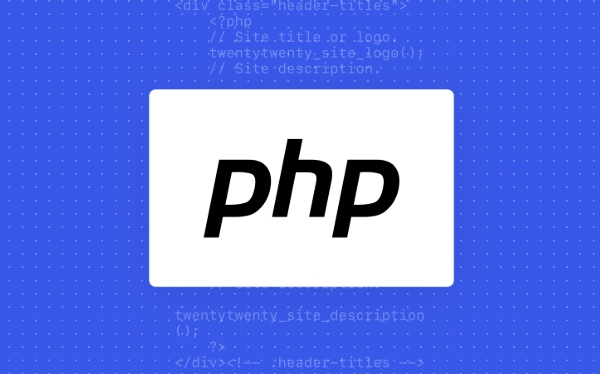 Backend Development
Backend Development
 PHP Tutorial
PHP Tutorial
 Crafting Bulletproof Conditionals with Strict Type Comparisons
Crafting Bulletproof Conditionals with Strict Type Comparisons
Crafting Bulletproof Conditionals with Strict Type Comparisons
Jul 30, 2025 am 04:37 AMAlways use strict equality (=== and !==) in JavaScript to avoid unexpected behavior from type coercion. 1. Loose equality (==) can lead to counterintuitive results because it performs type conversion, making 0 == false, "" == false, "1" == 1, and null == undefined all true. 2. Strict equality compares both value and type, ensuring predictable outcomes: 0 === false, "" === false, "1" === 1, and null === undefined are all false. 3. Use === in form validation, API handling, configuration checks, and state comparisons to prevent subtle bugs. 4. Prefer === and !== by default, validate input types early, and consider TypeScript for compile-time type safety. 5. Avoid truthiness checks when exact values are needed; instead of if (user.role), use if (user.role === "admin"). 6. For null or undefined checks, value == null is acceptable and commonly used because it reliably covers both. 7. Handle special cases: use Number.isNaN() for NaN checks since NaN !== NaN, and use deep comparison tools like Lodash’s _.isEqual() for object and array value comparisons. 8. Proactively manage edge cases to ensure conditionals behave as intended. Strict equality is not a complete solution but is essential for reliable, bug-free logic. In JavaScript, if it’s not ===, it’s a gamble.

When writing conditionals in JavaScript (or any loosely typed language), unexpected behavior can creep in if you're not careful with type comparisons. The key to crafting bulletproof conditionals lies in using strict equality (=== and !==) instead of loose equality (== and !=). Here's why it matters and how to apply it effectively.

Why Loose Equality Is Risky
JavaScript’s loose equality (==) performs type coercion before comparison. That means values of different types can be considered equal, which often leads to counterintuitive results:
0 == false // true "" == false // true "1" == 1 // true null == undefined // true
These might seem convenient, but they open the door to bugs, especially when dealing with user input, API responses, or form data where types aren't guaranteed.

Use Strict Equality for Predictable Results
Strict equality (===) checks both value and type, eliminating surprises:
0 === false // false "" === false // false "1" === 1 // false null === undefined // false
By using ===, you ensure your conditionals behave consistently. This is especially important in:

- Form validation
- API response handling
- Configuration checks
- Feature flags or state comparisons
For example:
function isActive(status) {
return status === "active"; // Only matches string "active"
}Without strict comparison, isActive(1) could return true if loosely compared to "1"—a subtle bug that’s hard to catch.
Practical Tips for Bulletproof Conditionals
To make your logic resilient:
Always prefer
===and!==unless you explicitly need type coercion (rare).Validate input types early in functions, especially when dealing with external data.
Use TypeScript to catch type issues at compile time, reducing runtime surprises.
Avoid truthiness checks when specific values are expected:
// Risky if (user.role) { ... } // Better if (user.role === "admin") { ... }When checking for
nullorundefined, use:value === null || value === undefined // or shorthand (if you're okay with coercion here) value == null
The
== nullpattern is widely accepted for nullish checks because it's predictable and concise.
Handle Edge Cases Proactively
Some values in JavaScript are notoriously tricky:
NaNnever equals itself, even with===. UseNumber.isNaN()instead.Objects (including arrays and dates) are compared by reference, not value:
[1,2] === [1,2] // false
For deep comparisons, use helper functions or libraries like Lodash’s
_.isEqual().
Using strict comparisons doesn’t make your code bulletproof on its own—but it’s a foundational step. Combined with good type discipline and defensive checks, it ensures your conditionals behave exactly as intended.
Basically: if it’s not
===, it’s a gamble.The above is the detailed content of Crafting Bulletproof Conditionals with Strict Type Comparisons. For more information, please follow other related articles on the PHP Chinese website!

Hot AI Tools

Undress AI Tool
Undress images for free

Undresser.AI Undress
AI-powered app for creating realistic nude photos

AI Clothes Remover
Online AI tool for removing clothes from photos.

Clothoff.io
AI clothes remover

Video Face Swap
Swap faces in any video effortlessly with our completely free AI face swap tool!

Hot Article

Hot Tools

Notepad++7.3.1
Easy-to-use and free code editor

SublimeText3 Chinese version
Chinese version, very easy to use

Zend Studio 13.0.1
Powerful PHP integrated development environment

Dreamweaver CS6
Visual web development tools

SublimeText3 Mac version
God-level code editing software (SublimeText3)

Hot Topics
 Demystifying Type Juggling: The Critical Difference Between `==` and `===`
Jul 30, 2025 am 05:42 AM
Demystifying Type Juggling: The Critical Difference Between `==` and `===`
Jul 30, 2025 am 05:42 AM
Using === instead of == is the key to avoid PHP type conversion errors, because == will cause unexpected results, and === compare values and types at the same time to ensure accurate judgment; for example, 0=="false" is true but 0==="false" is false, so when dealing with return values that may be 0, empty strings or false, === should be used to prevent logical errors.
 When Not to Use the Ternary Operator: A Guide to Readability
Jul 30, 2025 am 05:36 AM
When Not to Use the Ternary Operator: A Guide to Readability
Jul 30, 2025 am 05:36 AM
Avoidnestedternariesastheyreducereadability;useif-elsechainsinstead.2.Don’tuseternariesforsideeffectslikefunctioncalls;useif-elseforcontrolflow.3.Skipternarieswithcomplexexpressionsinvolvinglongstringsorlogic;breakthemintovariablesorfunctions.4.Avoid
 The Null Coalescing Operator (??): A Modern Approach to Handling Nulls
Aug 01, 2025 am 07:45 AM
The Null Coalescing Operator (??): A Modern Approach to Handling Nulls
Aug 01, 2025 am 07:45 AM
Thenullcoalescingoperator(??)providesaconcisewaytoassigndefaultvalueswhendealingwithnullorundefined.1.Itreturnstheleftoperandifitisnotnullorundefined;otherwise,itreturnstherightoperand.2.UnlikethelogicalOR(||)operator,??onlytriggersthefallbackfornull
 Beyond `if-else`: Exploring PHP's Alternative Control Structures
Jul 30, 2025 am 02:03 AM
Beyond `if-else`: Exploring PHP's Alternative Control Structures
Jul 30, 2025 am 02:03 AM
The alternative control structure of PHP uses colons and keywords such as endif and endfor instead of curly braces, which can improve the readability of mixed HTML. 1. If-elseif-else starts with a colon and ends with an endif, making the condition block clearer; 2. Foreach is easier to identify in the template loop, and endforeach clearly indicates the end of the loop; 3. For and while are rarely used, they are also supported. This syntax has obvious advantages in view files: reduce syntax errors, enhance readability, and is similar to HTML tag structure. But curly braces should continue to be used in pure PHP files to avoid confusion. Therefore, alternative syntax is recommended in templates that mix PHP and HTML to improve code maintainability.
 Refactoring Nested `if` Hell: Strategies for Cleaner Conditional Logic
Jul 30, 2025 am 04:28 AM
Refactoring Nested `if` Hell: Strategies for Cleaner Conditional Logic
Jul 30, 2025 am 04:28 AM
Useguardclausestoreturnearlyandflattenstructure.2.Extractcomplexconditionsintodescriptivefunctionsorvariablesforclarityandreuse.3.Replacemultipleconditioncombinationswithalookuptableorstrategypatterntocentralizelogic.4.Applypolymorphismtoeliminatetyp
 Crafting Bulletproof Conditionals with Strict Type Comparisons
Jul 30, 2025 am 04:37 AM
Crafting Bulletproof Conditionals with Strict Type Comparisons
Jul 30, 2025 am 04:37 AM
Alwaysusestrictequality(===and!==)inJavaScripttoavoidunexpectedbehaviorfromtypecoercion.1.Looseequality(==)canleadtocounterintuitiveresultsbecauseitperformstypeconversion,making0==false,""==false,"1"==1,andnull==undefinedalltrue.2
 Optimizing Conditional Logic: Performance Implications of `if` vs. `switch`
Aug 01, 2025 am 07:18 AM
Optimizing Conditional Logic: Performance Implications of `if` vs. `switch`
Aug 01, 2025 am 07:18 AM
Sometimes it will affect performance, depending on the language, compiler optimization and logical structure; 1. If statements are executed in order, and the worst case time complexity is O(n), the most likely condition should be placed first; 2. The switch statement can be optimized by the compiler to a jump table of O(1) when the conditions are continuous integers, many branches and the values are compiled constants; 3. When a single variable is compared with multiple constant integers and there are many branches and switches are faster; 4. When it involves scope judgment, complex conditions, non-integer types or fewer branches, if if is more suitable or has similar performance; 5. Different languages (such as C/C, Java, JavaScript, C#) have different optimization degrees of switches, and they need to be tested in combination with actual testing; Swi should be used first
 Leveraging Short-Circuit Evaluation with `&&` and `||` for Performance
Aug 01, 2025 am 07:31 AM
Leveraging Short-Circuit Evaluation with `&&` and `||` for Performance
Aug 01, 2025 am 07:31 AM
Use&&toskipexpensiveoperationsandguardagainstnull/undefinedbyshort-circuitingonfalsyvalues;2.Use||tosetdefaultsefficiently,butbewareittreatsallfalsyvalues(like0)asinvalid,soprefer??fornull/undefinedonly;3.Use&&or||forconciseconditiona





